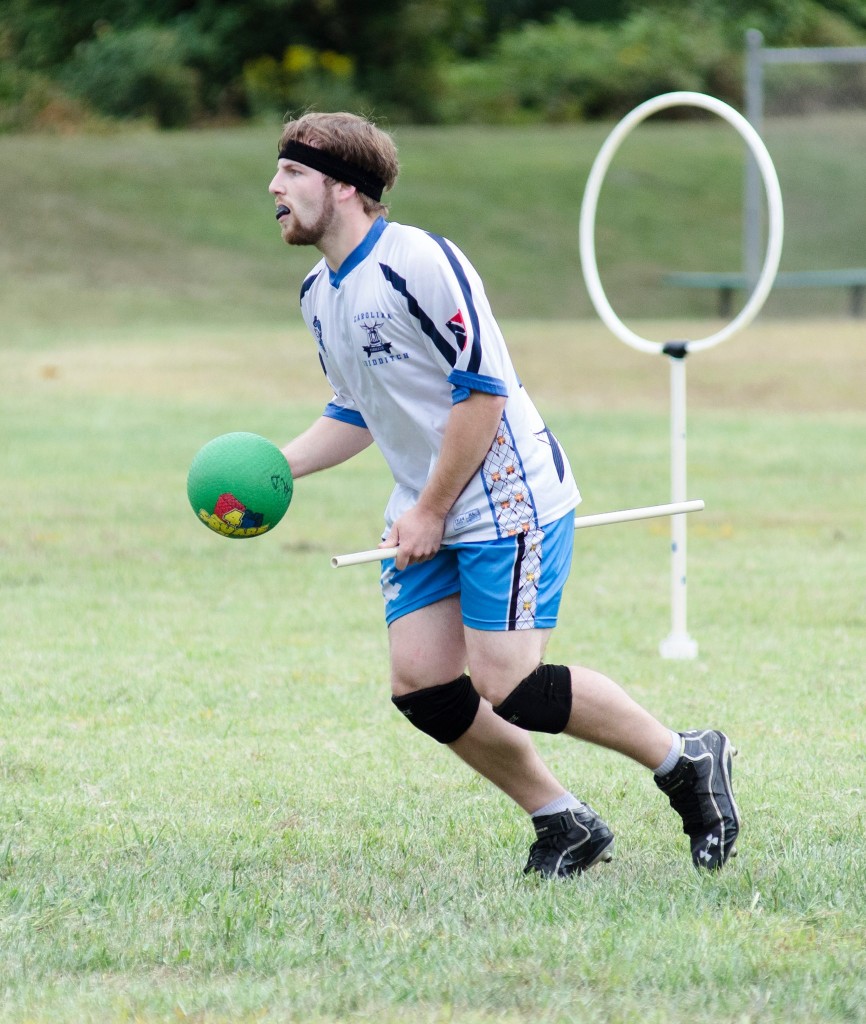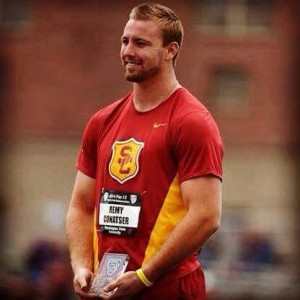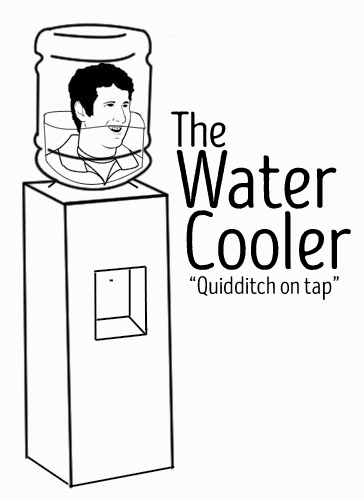Antwerp QC, Much of Belgian Core, Leaves Competitive Quidditch
Either way, there’s no use crying over spilled milk, and before I get into another tournament format rant, let’s get to the meat of the weekend. Week two is in the books, and while our perceptions of some teams have clarified, others have us asking more questions than ever.
Like a Turtle Without Its Shell
Turtle Cup, one of the premiere tournaments on the East Coast, both in its roster of competing teams and its tournament direction, has come and gone with what I believe to be the weakest slate of teams in its impressive history. It has been argued that this year’s group of teams are by default better than last year’s collection, with a very similar group plus the addition of a strong Rochester United side. But that argument is built on the concept of the University of Maryland and UNC being the teams they were last year — a World Cup Final Four squad and an Elite Eight finisher, respectively — and, after watching footage from this weekend, I can’t see any argument even close to that case.
Before I get to talking about the Terrapins and Tar Heels, the tournament champions probably merit a few words. Rochester United took the tournament by storm, and, through two weekends, has yet to play a game within snitch range. That being said, United has also yet to play a team in the Top 20. All of its strengths and weaknesses that I wrote about last week still stand, but credit to them for taking care of business this weekend. This squad’s true test will come on Oct. 17 when it travels to Hofstra University for the Oktoberfest Invitational. It will be the its first chance to match up with the elite-beating teams of the Northeast. We’ll reserve further analysis of the Rochester team until then.
Realistically, the most intriguing match of the tournament was not the final — which Rochester won after UNC disappointingly suicided — but the semifinal, in which the Tar Heels upset the Terrapins 120*-100 in a World Cup 8 Elite Eight rematch. The loss was Maryland’s first to a Mid-Atlantic squad since March 8, 2014, when it fell to the long-defunct NYDC Capitalists. It was just Maryland’s fourth IQA/USQ-official loss in the past three regular seasons. It was also its second time failing to win its own tournament in the past three years, having fallen to Emerson College in the quarterfinals of the 2013 edition.
Maryland was, at a rudimentary level, what it always has been in the semifinal match. Unfortunately, that’s becoming more of a negative than a positive as the years tick by. The Terrapins still sit in their same two-bludger defense, which gives almost no protection to the point beater and cedes bludger control at a disconcerting rate. I’m not sure there was a defensive possession all game where Maryland both began and ended with bludger control, and, in the modern game, that’s simply way too dangerous of a way to play. Against the Tar Heels’ Kyle Bullins, it was downright suicidal, especially when Jeremy Dehn was off the pitch, allowing Bullins to impose his will almost completely. Perhaps the most telling moment is when Bullins forced a turnover behind the Maryland hoops with a beat.

Credit: Kat Ignatova
The Terrapin offense also seemed out of sorts, missing that crisp passing that made it so dangerous in recent years. Points came more often from drives on no-bludger situations or the occasional pass to a wide-open, off-ball chaser but no pinpoint passes that broke down the opposing defense. Whether the return of Matt Angelico and Steve Sleaseman — two of the most talented quaffle players still on the roster — can affect that, remains to be seen. My love of Sleaseman’s talent off-ball is well-documented, and Angelico may be the best ball handler on the team. Their contributions are going to need to be impactful though, as nothing about Saturday’s performance screamed a Top-20 team outside of the expected physicality and athleticism.
As much as the semifinal match served as evidence for Maryland’s questionable credentials as an elite team, it may have been even more telling for the winning side. For all of the negatives I just listed about the Terrapins, it took two low-percentage shots — one from just inside midfield — from Justin Cole to even make it a snitch-range game when the snitch was released, and then a Maryland catch being called off before the Tar Heels finally got the monkey-sized terrapin off their collective backs.
Right now, UNC is Bullins — and his backup, Brian Farmer, who also played a solid game — even more so than it was last year. Beyond him, the team still doesn’t hit and still has trouble building a coherent offense. There were times in the semifinal where Bullins was camped out in the Maryland zone, forcing no bludgers for 10 seconds at a time, and the team simply could not score. Beyond Cole — who is rapidly developing after his breakout freshman season — and occasional contributions from Lee Hodge, there’s just not much going on offensively or defensively, especially at times where a little physicality is needed. The Tar Heels became an elite team last year by finally getting dirty on defense and stringing some passes together on offense. It remains to be seen if they can do that again, or if they’ll simply remain the Bullins Show.
Turtle Cup was undoubtedly in a down year talent-wise, largely because of the two teams above. There are more questions than answers right now about both, and DCQC fits into that mold as well. And this is all while not know a thing yet about Penn State University and Villanova University. The pole position in the Mid-Atlantic is wide open, and I don’t expect the picture to get any clearer by the Mid-Atlantic Regional Championship. It’s going to be a wild ride.
A Tale of Two Cities
With all due respect to Austin, Boston and Los Angeles are the two first cities of quidditch. Beyond having more teams than just about any other city in the country, Boston and Los Angeles also boast elite talent in the sport: Los Angeles contributed five players to last year’s Team USA, while Boston contributed three. No team from outside of Boston has ever won a Northeast Regional Championship, and Arizona State University is the only team from outside of Los Angeles to ever win a West Regional Championship. And even that was all the way back in 2010 and 2011. Simply put, quidditch in the West and Northeast go through Los Angeles and Boston, respectively.
Each of the two cities went through transitions last year. The LA Gambits joined the Lost Boys on top of Los Angeles, relegating UCLA to a second tier that the University of Southern California has called home for years, while Tufts University and Q.C. Boston: the Massacre — now Quidditch Club Boston — took over the top spots in Beantown, moving by longtime top-dogs Emerson College and Boston University.
Now, with a new season beginning, it appears the circle of life — or at least elite status — is once again turning in these quidditch metropolises.
Let’s start in Boston, where one of quidditch’s proudest programs appears on its last legs. Emerson had its struggles last season, but remained relevant, scoring three wins over Tufts throughout the season and making bracket play at World Cup 8. Things were always going to be difficult for the squad this year, with the likes of David Fox and Leeanne Dillmann graduating, but became downright dire with Tyler Trudeau and Dom Bailey leaving the team to join QCB and John General stepping away from quidditch entirely. At the last minute, the program’s tournament team merged with Boston Riot, and Griffin Conlogue was brought back in to help lead the team.
The result of all of the turmoil was an opening weekend for the team that saw it lose one of the most lopsided matches in the long, tumultuous history of the Emerson/Boston rivalry. The Terriers were able to get basically whatever they wanted in the beater game, and turned it into bludgerless situation after bludgerless situation as they ran up the score. The final scoreline, 140*-20, was, if anything, kind to Emerson.
Things got worse for the team later in the day, as it was knocked out of bracket play, 160*-110, by an unofficial University of Massachusetts Lowell. Rumor was that Emerson was not at full strength for the weekend, but it’s going to be a long road back to relevance for the team this season.
Boston, meanwhile, seems primed to break back into the upper echelon of the city. Returning almost all of its core from last year, the team is athletic and physical, and it is finally starting to get the strategic wherewithal to back it up. Max Beneke and Peter Cho have developed rapidly at beater, and their new style of offensive beating is reminiscent of former Boston star Max Havlin. Dylan Carlson and Kohl Thorlakson have developed into more-complete players in the quaffle game and, though the half-court offense remains very much in question, they were able to get themselves enough point over the weekend. Their first real test comes Saturday against Tufts.
In Los Angeles, meanwhile, a three-game scrimmage gave us an important look at the landscape of the city this season. The Lost Boys took on USC in a series of matches that proved the Trojans preseason roster was not a hoax. As someone with literal money bet on the fact that it was, I’m as surprised as just about anyone.

Credit: USC
The presence of a roster that includes the likes of August Luhrs and Remy Conatser was not particularly relevant for the results of a preseason scrimmage — which Lost Boys won handily, though USC was without David Demarest and Ryan Parsons — but for what it means for the season. If the Trojans can maintain this roster, they have, perhaps, the highest ceiling of any team in the country.
There is an important distinction between elite athletes and elite quidditch players. While elite quidditch players have immense skill within the sport and a good deal of athleticism to boot, they don’t have the kind raw strength, speed or agility that make elite athletes that much better than their competitors. In Conatser and Luhrs, USC has a pair of truly elite athletes, and once their quidditch knowledge catches up, it’s a terrifying proposition for the rest of the league, and also for snitches.
USC has struggled to remain relevant in Los Angeles in recent years, but the opening is definitely there. The Trojans, by the time the West Regional Championship rolls around, boast a physical, skilled quaffle lineup with depth and a seeking line that will be almost unstoppable. Whether their beating game can keep up, and whether it will all be enough, remains to be seen.
But, either way, things have seemingly been shaken up on both coasts.
A Little Bubbly Before We Go
Early yesterday morning, US Quidditch’s Gameplay Department — the one department you can always count on to actually accomplish something in a timely manner — released the bid distributions for that end-of-the-season tournament with a name I’m too lazy to look up.
Due to the tournament shrinking from 80 teams to 60 this year, regional championships and, by extension, bid-distribution numbers, mean more than ever. There simply aren’t enough bids, particularly in some regions, for the teams that have long been perennial participants.
So where is the bubble most interesting? Let’s take a look:
Great Lakes: This one is going to be a doozy. Even with three bids locked up through World Cup 8 finishes, the region only earned nine total. When you lock in Ball State University, Bowling Green State University, Central Michigan University, Lake Effect times two, Miami University, University of Michigan, Michigan State University and Ohio State, you’re left with… zero spots. Oh, boy. Luckily, there would be no team beyond those nine that would be a massive surprise to find itself on the wrong side of the bubble, but it does leave no room for error both for these teams and for the format of qualification in the tournament.
Northeast: Locking in Rochester United, Boston University, Quidditch Club Boston, NYU, The Warriors and Tufts leaves you with a four-team bubble for this 10-bid region. With University of Rochester, RIT, SUNY Geneseo, Hofstra University, Emerson and RPI, some programs with very proud histories will not be making the trip. And that’s before even getting into some of the upstart programs in the region. The Great Lakes might actually be the hardest region to qualify through, but the Northeast is likely to be the one with the biggest name left out.
South: Four bids for an original region is a tough bit to swallow, especially when University of Miami and Florida’s Finest are all but guaranteed two of them. One thing is for sure: there won’t be any 1-11 teams qualifying this season.
Southwest: The earned bid system was harsh on the sport’s strongest region, which only put three teams into the Sweet 16 and walked away from the table yesterday with just nine bids. Last week we talked about the upper echelon of the Southwest being seven teams, and if those teams are all to be considered locks, that only leaves two spots for all the upstarts, the B- teams and the Arkansases and Oklahomas of the world. Every year, a Southwest team with a lesser pedigree impresses us all with a seemingly overachieving World-Cup run that probably shouldn’t surprise us based on the competition they face all year. This year, those teams might not even get a chance to do so.
Archives by Month:
- May 2023
- April 2023
- April 2022
- January 2021
- October 2020
- September 2020
- July 2020
- May 2020
- April 2020
- March 2020
- February 2020
- January 2020
- December 2019
- November 2019
- October 2019
- August 2019
- April 2019
- March 2019
- February 2019
- January 2019
- November 2018
- October 2018
- September 2018
- August 2018
- July 2018
- June 2018
- April 2018
- March 2018
- February 2018
- January 2018
- November 2017
- October 2017
- July 2017
- June 2017
- May 2017
- April 2017
- March 2017
- February 2017
- January 2017
- December 2016
- November 2016
- October 2016
- September 2016
- August 2016
- July 2016
- June 2016
- May 2016
- April 2016
- March 2016
- February 2016
- January 2016
- December 2015
- November 2015
- October 2015
- September 2015
- August 2015
- July 2015
- June 2015
- May 2015
- April 2015
- March 2015
- February 2015
- January 2015
- December 2014
- November 2014
- October 2014
- September 2014
- August 2014
- July 2014
- May 2014
- April 2014
- March 2014
- February 2014
- January 2014
- November 2013
- October 2013
- September 2013
- August 2013
- July 2013
- June 2013
- May 2013
- April 2013
- March 2013
- February 2013
- January 2013
- December 2012
- November 2012
- October 2012
Archives by Subject:
- Categories
- Awards
- College/Community Split
- Column
- Community Teams
- Countdown to Columbia
- DIY
- Drills
- Elo Rankings
- Fantasy Fantasy Tournaments
- Game & Tournament Reports
- General
- History Of
- International
- IQA World Cup
- Major League Quidditch
- March Madness
- Matches of the Decade
- Monday Water Cooler
- News
- Positional Strategy
- Press Release
- Profiles
- Quidditch Australia
- Rankings Wrap-Up
- Referees
- Rock Hill Roll Call
- Rules and Policy
- Statistic
- Strategy
- Team Management
- Team USA
- The Pitch
- The Quidditch Lens
- Top 10 College
- Top 10 Community
- Top 20
- Uncategorized
- US Quarantine Cup
- US Quidditch Cup

